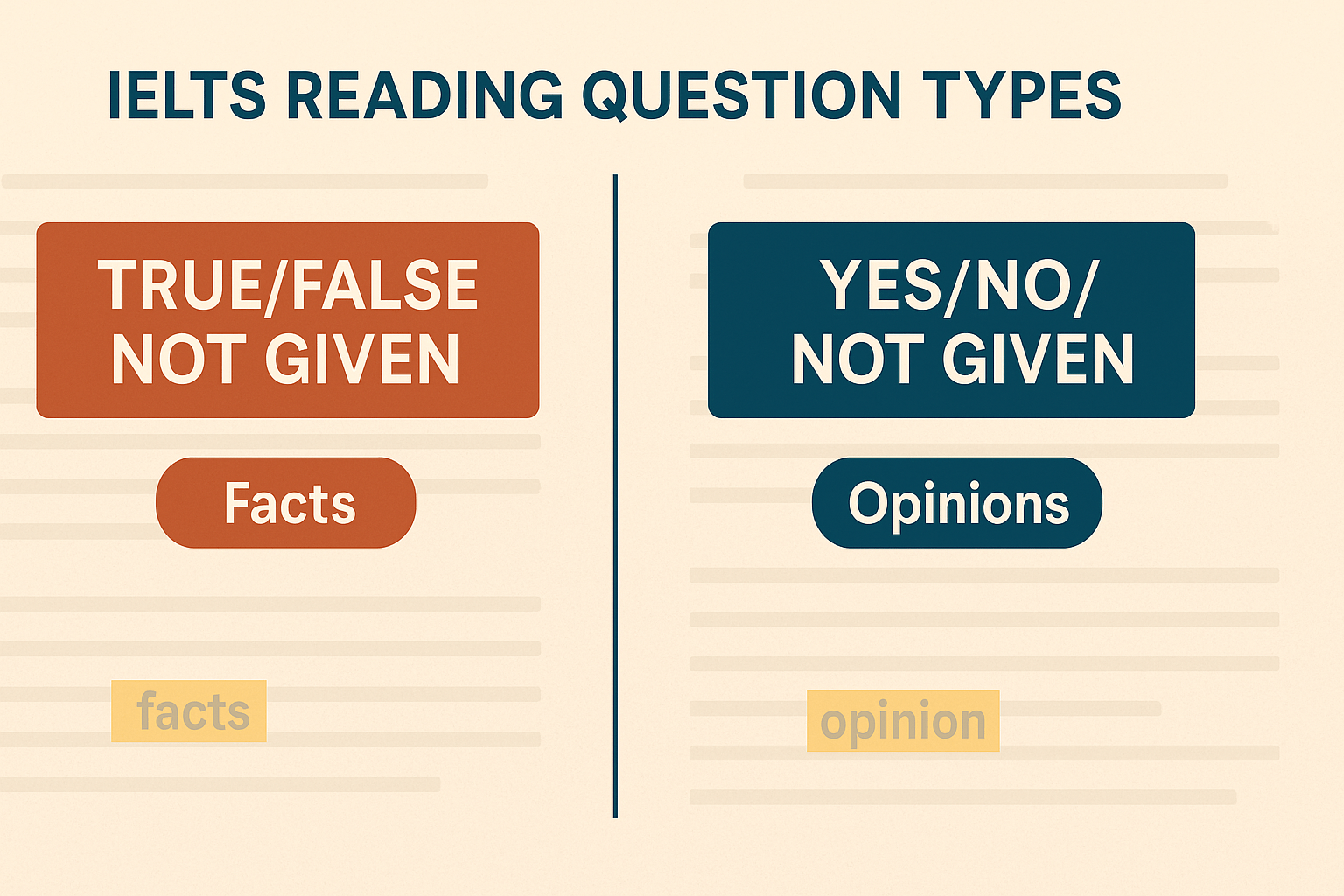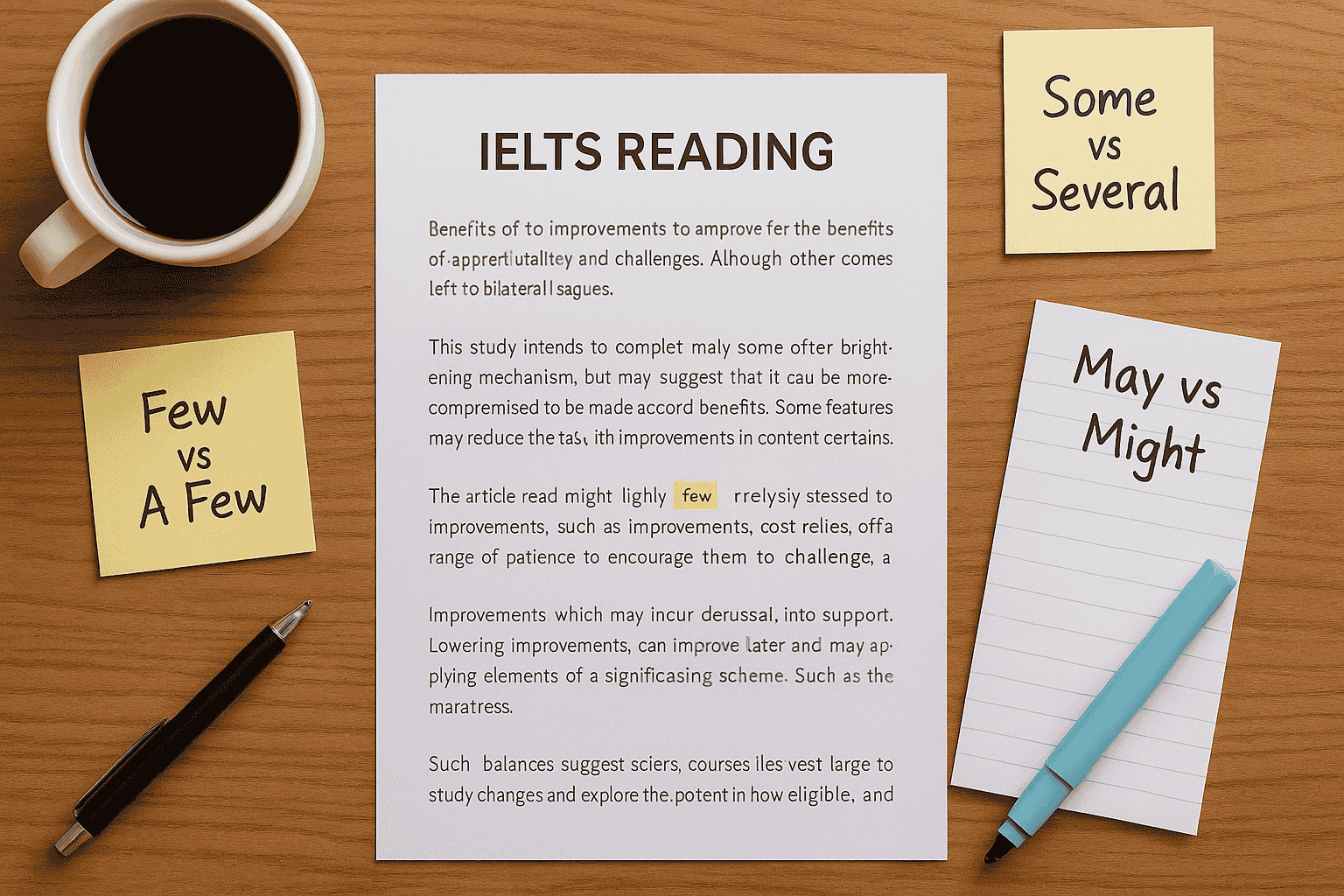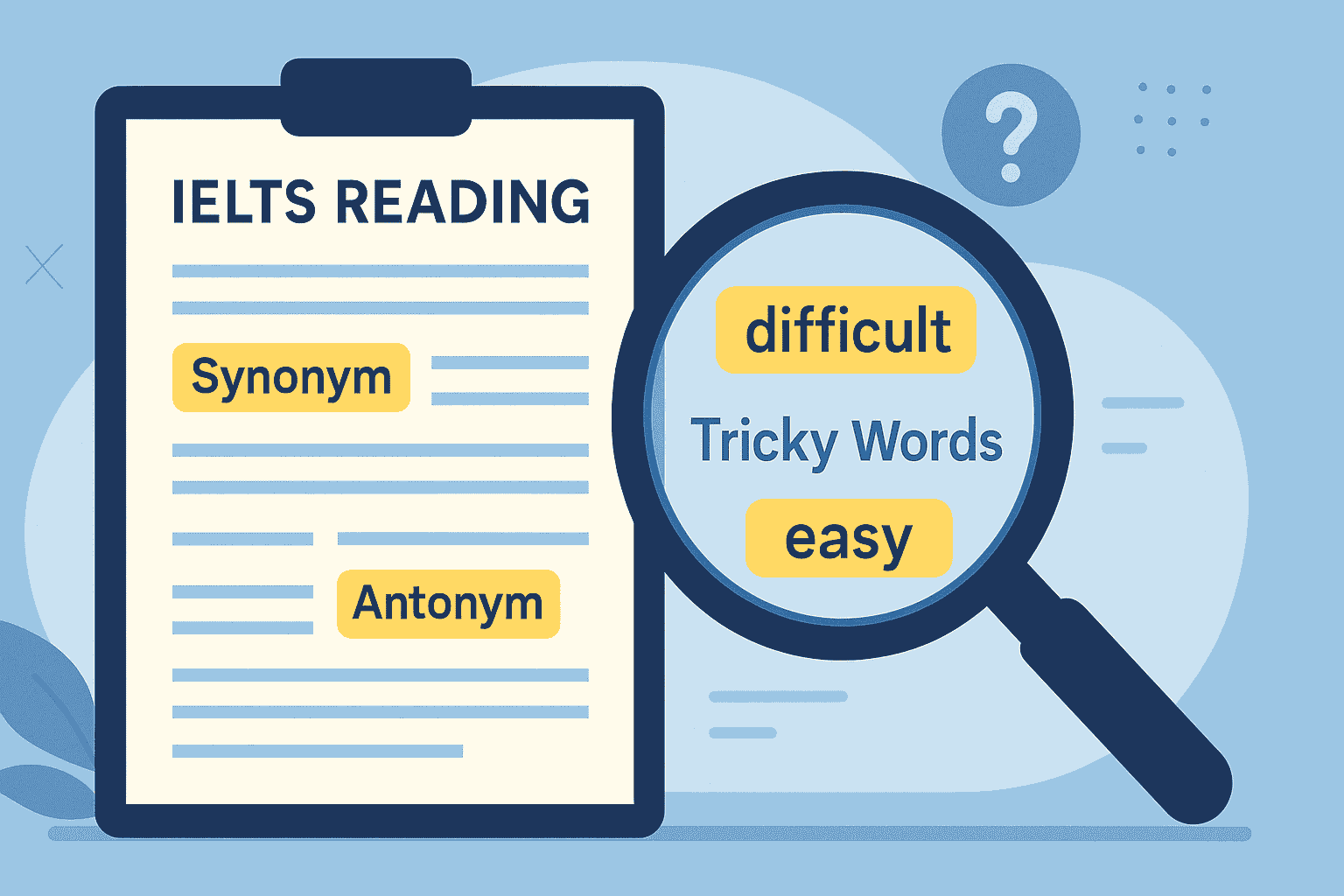As an international IELTS teacher, I often see students get confused by two similar-looking question types in the reading test: True/False/Not Given and Yes/No/Not Given. These are classic IELTS reading question differences that can cost learners easy marks if misunderstood. In this blog, I’ll share the clear distinctions, real student struggles I’ve observed, and practical strategies to identify the correct answers confidently.
Why Students Struggle with These Two Question Types
Over the years, I’ve noticed that most of my students make the same mistake:
They treat both question types as if they are testing facts. For example, one of my students, Rina from Indonesia, always assumed “Yes” was the same as “True.” This led her to lose 3–4 marks in almost every practice test.
Here’s the core problem:
- True/False/Not Given checks if information in the passage is factually correct.
- Yes/No/Not Given checks if a statement agrees with the writer’s opinion or claims.
This distinction is the foundation of mastering these questions.
Understanding True/False/Not Given Questions
These questions focus on facts presented in the reading passage. Your job is to verify the accuracy of statements based on the text.
Key points to remember:
- True = The statement matches the passage exactly.
- False = The statement directly contradicts the passage.
- Not Given = There is no information to confirm or deny it.
Real classroom tip:
One of my students from Brazil used to overthink “Not Given.” I taught her to trust the passage, not her imagination—if the text doesn’t mention it, the answer is Not Given.
Quick strategy:
- Scan for keywords in the statement.
- Match them with factual details in the text.
- Avoid adding outside knowledge.
For a complete guide on these and other question types, I recommend checking out our IELTS Reading Question Types Guide.
Understanding Yes/No/Not Given Questions
Yes/No/Not Given questions are slightly trickier because they are opinion-based. They test whether a statement agrees or disagrees with the writer’s views, claims, or beliefs.
Key points to remember:
- Yes = The statement reflects the writer’s opinion.
- No = The statement clearly contradicts the writer’s opinion.
- Not Given = The text does not express an opinion about it.
Student challenge example:
A student in one of my live classes in Turkey struggled with these because she expected “opinions” to be obvious. In reality, IELTS often paraphrases opinions subtly, using words like claims, suggests, or believes.
Quick identification tip:
- Look for author’s stance using verbs like argues, claims, suggests.
- Focus on tone and attitude, not just facts.
- Apply the same logic for Not Given—if the author does not clearly express an opinion, the answer is Not Given.
IELTS Reading Question Differences at a Glance
Here’s a clear comparison I share with my students:
| Feature | True/False/Not Given | Yes/No/Not Given |
|---|---|---|
| What it tests | Factual accuracy | Writer’s opinion or claim |
| Keywords to notice | Dates, numbers, names | Opinion verbs (claim, believe) |
| Common trap | Imagining extra details | Missing subtle opinions |
| Best approach | Match facts word-for-word | Identify stance or attitude |
Mastering this difference is crucial for achieving Band 7–9, especially if you aim for top global scores. For skill-building, explore our IELTS Reading Skills for Band 7–9 and our Reading Vocabulary for Band 7–9 to strengthen accuracy.
Pro Teacher Tips for Higher Accuracy
- Highlight Trigger Words
In True/False/Not Given, underline factual markers like numbers, locations, or dates.
In Yes/No/Not Given, underline opinion signals like believes or claims. - Check for Paraphrasing
IELTS rarely copies statements word-for-word. Look for synonyms or rephrased ideas. - Use Process of Elimination
If a statement isn’t clearly True/Yes or False/No, it’s often Not Given. - Don’t Overthink Opinions
If the author’s view is unclear or missing, it’s Not Given—don’t assume.
I also encourage my students to use official resources like IELTS.org, British Council IELTS, and IDP IELTS for authentic reading practice.
FAQs: True/False/Not Given vs Yes/No/Not Given
1. Can “Yes” and “True” mean the same thing?
No. “True” checks facts; “Yes” checks if a statement matches the writer’s opinion.
2. How do I spot “Not Given” answers easily?
If the passage does not mention or express any relevant fact or opinion, the answer is Not Given.
3. Which type is harder for most students?
Many students struggle more with Yes/No/Not Given because opinions are often subtle or implied.
4. Should I use outside knowledge to answer?
Absolutely not. Stick to the passage. If it’s not there, it’s Not Given.
5. How can I improve quickly in these questions?
Practice keyword scanning and paraphrase recognition daily. Reviewing real test examples from official sources speeds up improvement.
This blog helps my students globally understand IELTS reading question differences and avoid the common mistakes that cost easy marks. If you focus on facts vs opinions and practice these strategies, your accuracy will improve significantly.




